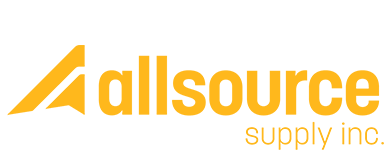
Protect Your Crew: Carbon Monoxide Safety for Concrete Polishing Jobs
Preventing carbon monoxide poisoning in concrete workspaces is critical for ensuring safety and saving lives. Carbon monoxide (CO) is an invisible, odorless gas that can quickly become deadly in poorly ventilated spaces.
At Allsource Supply Inc., we’re committed to helping contractors and concrete professionals create not only durable and visually stunning surfaces but also a safe working environment.
This article aims to educate and empower our community with actionable tips to prevent carbon monoxide poisoning in concrete flooring workspaces.
UNDERSTANDING CARBON MONOXIDE RISKS IN CONCRETE WORK
Carbon monoxide is a colorless, odorless, and tasteless gas produced by the incomplete combustion of fuels like propane, gasoline, or natural gas. In poorly ventilated spaces, CO can accumulate rapidly, posing life-threatening risks to workers.
KEY FACTS ABOUT CARBON MONOXIDE:
- Invisible and undetectable without specialized equipment.
- Initial symptoms of exposure include headaches, dizziness, nausea, and fatigue.
- Prolonged or high-level exposure can lead to unconsciousness, brain damage, or death.
Concrete professionals using propane-powered grinders, polishers, or heaters in enclosed spaces are particularly vulnerable. Understanding the risks and preventive measures is essential for every job site.
ESSENTIAL SAFETY PRACTICES FOR CONCRETE PROFESSIONALS
To minimize the risk of carbon monoxide poisoning, follow these safety protocols:
- Prioritize Ventilation:
- Always ensure adequate airflow when operating fuel-powered equipment indoors.
- Use exhaust fans, open windows, or create air pathways to facilitate proper ventilation.
- Use Carbon Monoxide Detectors:
- Install portable CO detectors with alarms in enclosed workspaces.
- Regularly check detector batteries and functionality to ensure reliability.
- Maintain Equipment:
- Regularly inspect and maintain propane-powered tools to ensure complete combustion.
- Replace worn-out components and avoid using faulty equipment.
- Train and Educate Workers:
- Conduct safety training sessions focused on CO risks and emergency response procedures.
- Educate teams about recognizing early symptoms of CO exposure and the importance of immediate evacuation.
- Develop Emergency Plans:
- Establish clear protocols for handling CO exposure, including rapid evacuation and medical response.
- Equip job sites with oxygen and first-aid kits tailored for CO-related emergencies.
ON JANUARY 3, 2025, A 43-YEAR-OLD WORKER DIED FROM CARBON MONOXIDE POISONING WHILE GRINDING AND POLISHING A CONCRETE FLOOR INSIDE AN ENCLOSED BARN IN ALMONT TOWNSHIP.
The barn lacked ventilation, and the workers were using propane-powered equipment, which led to a rapid build-up of carbon monoxide.
What We Can Learn:
- The absence of proper ventilation and monitoring equipment can turn routine tasks into life-threatening situations.
- Proactively integrating safety measures, like CO detectors and ventilation systems, can save lives.
- If CO poisoning is suspected, evacuate the area, call 911, and administer oxygen if available
ENSURING SAFETY WITH PROFESSIONAL STANDARDS AND EXPERT GUIDANCE
At Allsource Supply Inc., we are dedicated to providing equipment that meets the highest safety standards, meticulously maintained to ensure reliable and secure operations. Whether you choose to purchase or rent, our goal is to support your team’s safety and efficiency on every project.
In addition, we offer comprehensive training programson concrete flooring finishes, crack repair techniques, and standard operating procedures (SOPs) for handling professional equipment.
These resources are designed to equip your team with the knowledge and practices needed to prioritize both safety and personal protection in the workplace.

Informational Training At Allsource Supply Inc.
At Allsource Supply, we care deeply about your well-being and want to ensure you go home safely to your loved ones daily. Please feel free to reach out if you’d like more information on safety equipment or best practices.
Thank you for trusting us as your partner in success and safety.
- Protect Your Crew: Carbon Monoxide Safety for Concrete Polishing Jobs - November 26, 2025
- What are the Best Methods for Preventing Bubbles in Polyaspartic Topcoats? - November 26, 2025
- WHY CONCRETE COATINGS ARE WORTH THE INVESTMENT: DURABILITY, AESTHETICS, AND COST-EFFECTIVENESS - November 18, 2025

